Travelogue: Rapa Nui – Day 4 Highlights
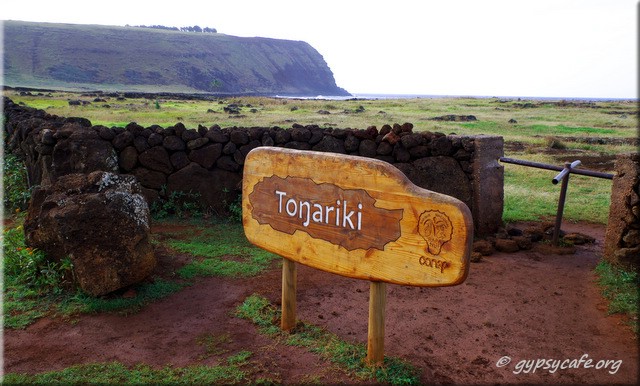
In the morning I went to the tourist information office to pick up some maps and brochures. When inquiring about the weather staff assured me that it would be raining for 3 or 4 days and that the rain would start the following morning. They recommend getting as much as possible sightseeing in during the day.
This made me decide to head out to the south-east end of Easter Island and then walk back from there. I did not want to miss out on Ahu Tongariki which was meant to be one of the most spectacular moai sites and nearby was Rano Raraku, the quarry where back in the day the moai were carved before being transported to the various locations on the island.
I opted for a taxi ride all the way out to Tongariki and have them drop me off there. I would then hike back along the coast, which I estimated would take me about six hours. On arrival I was in awe. Ahu Tongariki was indeed an impressive sight with the mountain and ocean as a backdrop and the sheer size of the moai were astounding. I spent some time here.
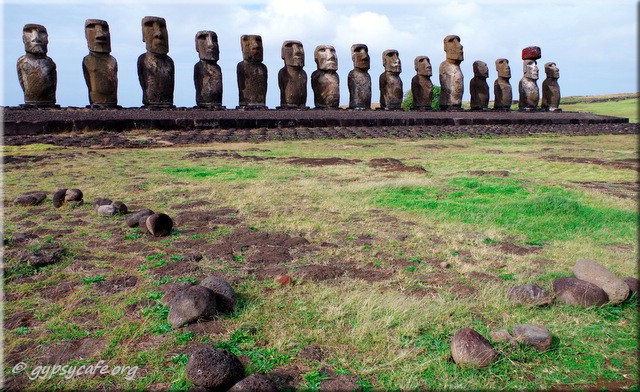
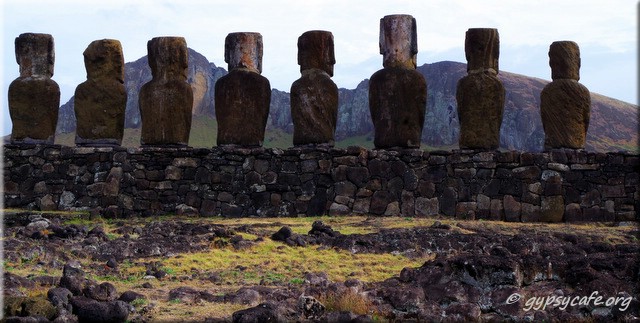
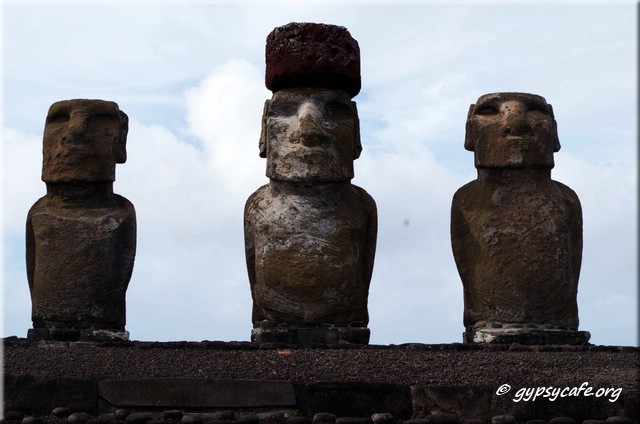
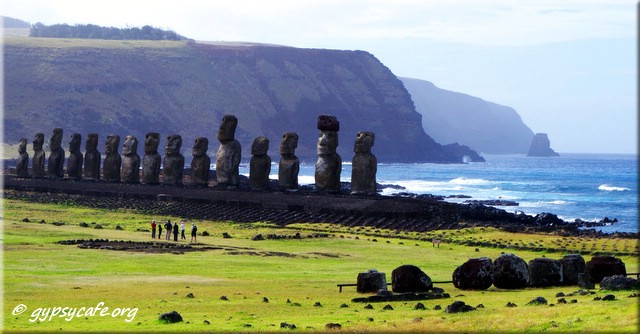
From Tongariki there’s a country road, off the main road, which leads to Rano Raraku. The taxi driver pointed out earlier that I could use this road to walk around to the quarry. On the way I came across Rapa Nui horses providing for a picturesque photo opportunity or two.
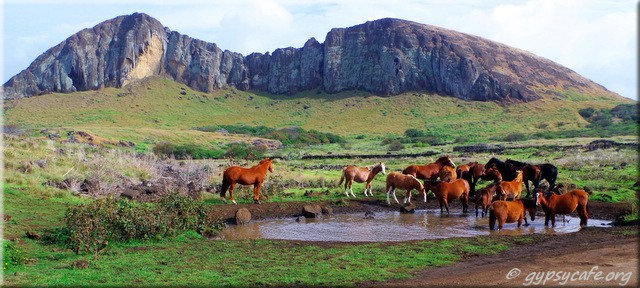
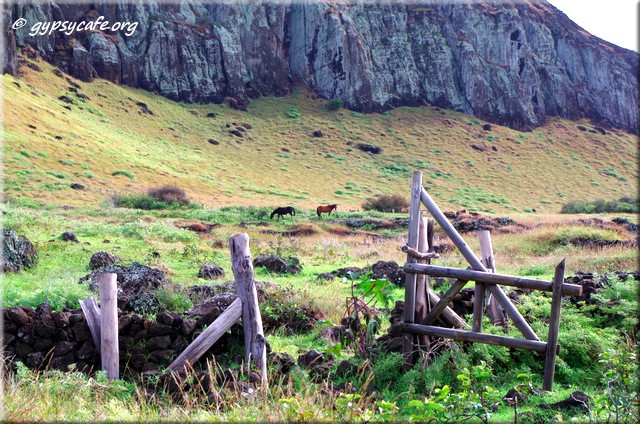
As I turned the bend, a picture of moai embedded and dotted on the slopes of Rano Raraku came into view. An additional couple of horses did the honours of “posing” in front of this impressive backdrop. The light was somewhat diminished here though and by now the weather had turned overcast.
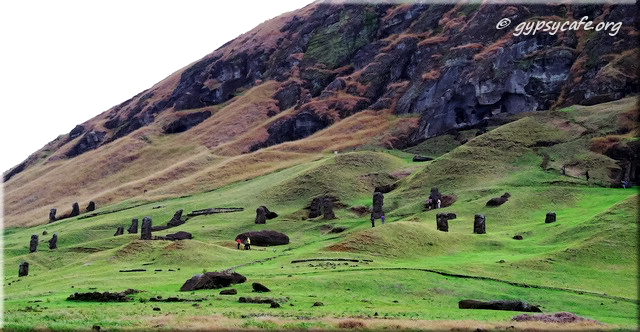
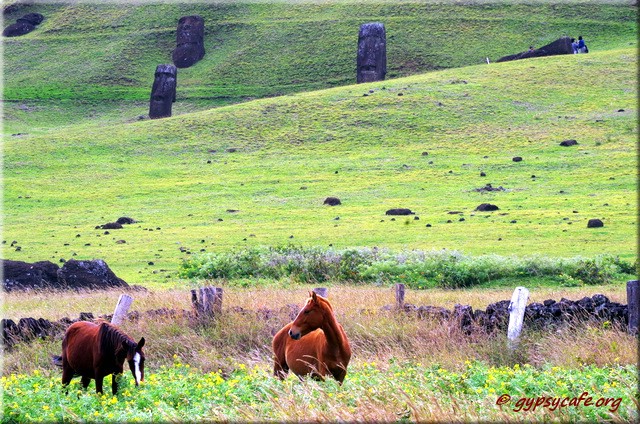
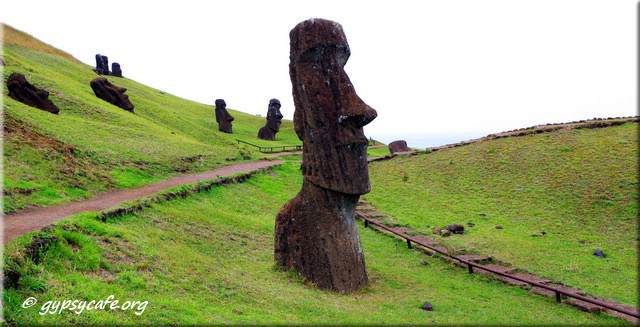
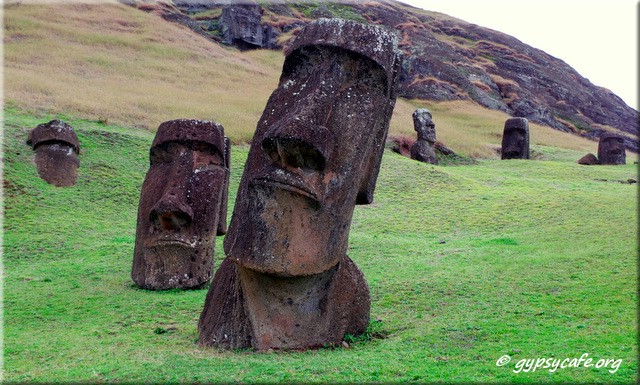
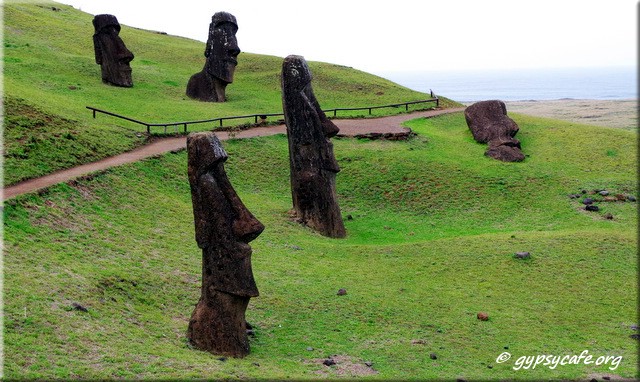

After spending about two and a half hours at Rano Raraku I set off along the coast back in the direction of Hanga Roa. The weather deteriorated as I went along and I eventually walked for a few kilometers in on-and-off drizzle while traversing rugged terrain. What struck me as I continued was the amount of bones of dead animals, presumably from horses and maybe dogs, which I came across or noticed, many of them strewn about inside caves or in large holes. I was later informed that there is a reason for the animal deaths and therefore not out of the ordinary to see many bones lying about in some places. I passed platform after platform of toppled moai, which were the worse for wear after very many years of exposure to the elements. This was in stark contrast to the magnificently restored standing moai at Ahu Tongariki and the embedded moai at Rano Raraku.
By the time I arrived at the exit gate of the nature reserve it was late afternoon and it started pouring. Just at that moment a municipality vehicle came by and offered me a lift back to town. That evening at the B&B one of the guests filled me in on various points of interest that I had noticed during the day. I was now more excited than ever to get out there again the following day and explore more, but disappointingly it was meant to rain for the rest of my stay. I couldn’t help but wish that somehow the weather would turn out differently, as it is not every day that one visits Easter Island.
Exploring Easter Island
Photographs and text by Jean-Jacques Montagnier
Copyright © 2015 – All Rights Reserved – Gypsy Café

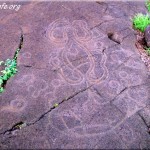
2 Comments
Could I ask how much the taxi ride was? Am in Easter Island now and I get the feeling the prices are considerably marked up when I try to ask about them.
Hello, sorry for the delayed reply. If I remember well the price was 20 000 Chilean Pesos, but I’m not sure – it was either 20 000 or 40 000. Either way I remember thinking that it was very expensive. Yes, the prices are generally very high, unfortunately and I think bargaining is the best way – especially with taxi’s – however, you could perhaps try hitch-hiking… and go for free! Just an idea, but I got lifts from locals and tourists during my stay there. Good luck and enjoy!